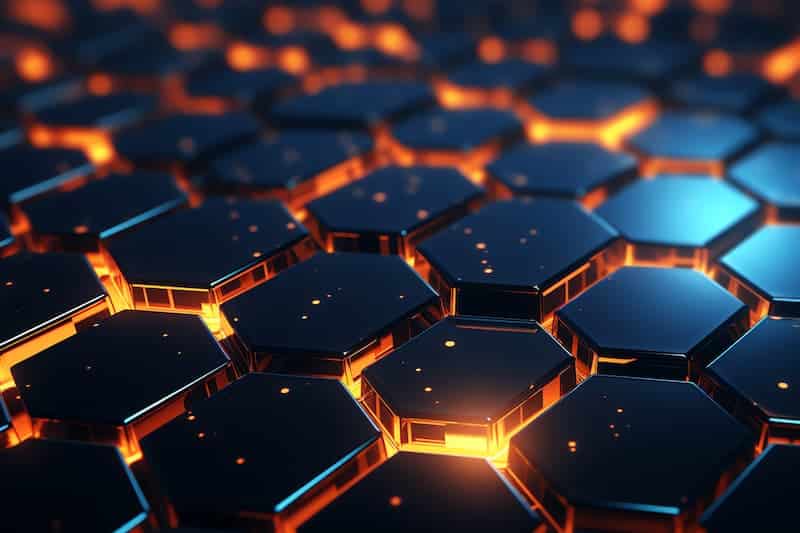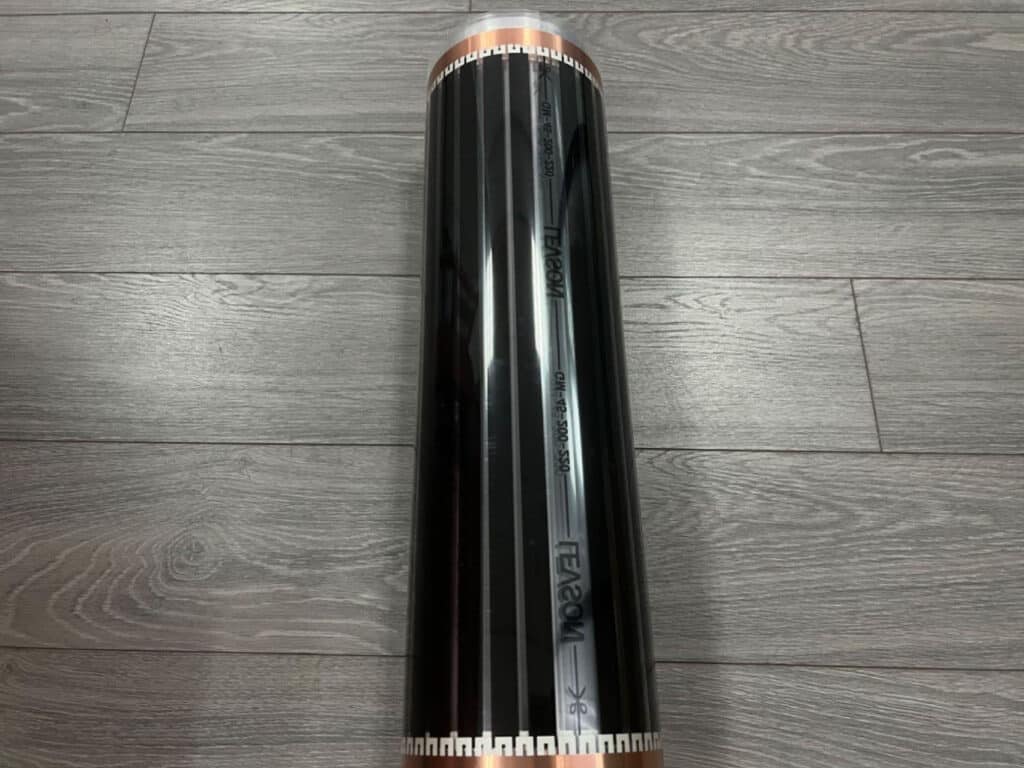Hotter Than Ever: Graphene’s Thermal Revolution
Source: Internet Graphene’s thermal conductivity is a highly researched field, thanks to its exceptional heat conduction properties and potential applications in thermal management. At room
Graphene is a two-dimensional material consisting of a single layer of carbon atoms arranged in a hexagonal honeycomb pattern with unique chemical and physical properties, such as high electrical conductivity, high thermal conductivity and high strength. In this paper, while exploring the volatility and fugitive properties of graphene, we will focus on its stability in different environments and its safety in graphene-applied products (graphene electric heating film).

Graphene itself, as a two-dimensional material consisting of a single layer of carbon atoms, is not “volatile” in the conventional sense, as it is one of the stable carbon isomers. The bonds between the carbon atoms in graphene are very strong, making it very stable at both normal and high temperatures. In fact, graphene can withstand temperatures of up to thousands of degrees Celsius (in oxygen-deficient environments) without decomposing or “evaporating”. For example, the melting point (if you can call it a “melting point”) of graphene is theoretically predicted to be well over 3,000°C, suggesting that it remains stable at extreme temperatures.
In practice, when we talk about “volatility” in relation to graphene, we are usually referring to the volatilisation of chemicals used in the production of graphene or other components of graphene composites, rather than to graphene itself. These chemicals or other components may volatilize when processed and heated to several hundred degrees Celsius, depending on the specific substance involved.
In general, graphene itself is very stable at high temperatures and is not released in the form of volatiles. Environmental or health risks are more likely to arise from chemicals associated with the production or application of graphene than from graphene itself. When dealing with graphene or its composites at elevated temperatures, it is the volatile behavior of other volatile organic compounds (VOCs) or other hazardous substances that may be released from these materials that should be of concern.
– Research studies have shown that graphene can withstand temperatures up to thousands of degrees Celsius without decomposing or evaporating. Studies have also demonstrated the high thermal stability of graphene in various environments. (Source: “Stability and reactivity of carbon-based systems: From carbon clusters to graphite and soot” by J. P. Hare and S. J. Zimmele)
The main concern of graphene’s fugitive nature is that its nanoparticles or fragments may escape into the external environment due to abrasion, friction, improper use or improper storage. Although as a solid material, the risk of escape of graphene is much lower compared to gases or liquids, graphene should be stored in a protective manner in order to minimise the risk of escape of graphene. For graphene products, wear and tear should be reduced.
– Studies have shown that nanoparticles of various materials, including graphene, can be released into the environment during manufacture, use, and disposal. These particles can pose potential risks to human health and the environment. (Source: “Environmental Impacts of Nanotechnology: Major Benefits and Possible Risks” by Y. M. H. J. S. Verian et al.)
Graphene electric heating film is a type of electric heating product with the application of graphene material, which has been widely researched and used due to graphene’s excellent electrical and thermal conductivity properties. In such products, graphene is typically processed into a slurry form in order to be coated or sprayed onto a substrate material to form an electric heating film. Graphene thermal conductive pastes generally consist of graphene powder and one or more dispersants (and possibly binders and other additives) to ensure uniform distribution and good adhesion of the graphene to the substrate.
Volatilisation of dispersants and additives: In graphene thermally conductive pastes, the main components that may volatilise are dispersants and other chemical additives, especially during the heating process. These substances may volatilise when heated to certain temperatures, especially during baking or curing, in order to remove solvents from the paste and enhance the structural strength of the film. This volatilisation is expected and usually occurs at an early stage of the manufacturing process. Therefore, under normal conditions of use, even if the electric film is heated, the amount of volatilization of these chemicals is very limited, especially after the initial heat curing process.
– Studies have investigated the volatility of dispersants and additives in various graphene composites and have shown that these chemicals can undergo volatilization during processing and thermal treatment. Proper control of processing conditions is important to minimize volatile emissions. (Source: “Effects of Additives on Volatile Organic Compounds Emission and Dechlorination Efficiency in Co-processing Municipal Solid Waste Pyrolysis Gas using Aluminum Chloride” by H. Li et al.)
As mentioned earlier, graphene itself is very stable at high temperatures and does not volatilize. Therefore, the portion of graphene powder in the electric heating film will not volatilize due to high temperatures
– The thermal stability of graphene and its resistance to volatilization at elevated temperatures have been demonstrated in various studies investigating the behavior of graphene-based materials under heating conditions. (Source: “Thermal properties of graphene-based materials” by S. J. Guo et al.)
Regarding the physical escape of graphene and its composites, it usually refers to the release of tiny particles from the material due to wear and aging. Graphene electric heating film has a low probability of escape during normal use if the material is properly designed and the graphene particles are held in the base material. However, prolonged use, mechanical friction, or physical damage may cause tiny graphene particles to be released from the film. Therefore, when installing graphene heating film, a protective film is installed on top, which can effectively prevent wear and tear.

Under normal conditions of use, graphene heating film is designed and manufactured to minimize the evaporation of chemicals to ensure its safety. As mentioned earlier, graphene itself is a very stable substance that does not produce harmful volatiles from heating. Instead, the manufacturing process of an electric heating film may involve the use of various chemicals, such as dispersants, adhesives, and other additives, which undergo volatilization during processing and curing at the time of initial manufacture.
Graphene electric heating film may be slightly volatile when first heated for use, as any residual solvents or chemicals used in the manufacturing process may be released upon heating. This is generally most noticeable when the product is first used and decreases significantly over time. However, it should be noted that on initial heating, wood floors and furniture, sofas, etc. may evaporate more formaldehyde, TVOC, etc. due to the increased temperature. It is recommended to ventilate with windows open for initial use. With the continued use of electric heating film, the volatilization of chemicals is very limited, but new furniture, flooring, etc. Harmful substances are precipitated for a longer period, it is recommended to pay attention to open the windows often to ventilate the house to disperse harmful substances.
As far as our graphene heating film products are concerned, many international certificates have been obtained. The actual cases are applied in kindergartens, and schools and are safe to use.
Source: Internet Graphene’s thermal conductivity is a highly researched field, thanks to its exceptional heat conduction properties and potential applications in thermal management. At room
With the passing of 2024 and the arrival of 2025, graphene heating technology is developing faster and faster, and there are more and more people’s
Two Misconceptions About Graphene Heating Film Two Common Misconceptions About Graphene Heating Films: Have You Fallen for Them? Introduction to Graphene Graphene is a revolutionary
Still Using Traditional Electric Blankets? During the cold winter months, traditional electric blankets can cause skin dryness and even constipation due to dehydration. Now, the
Experience the excellent energy-saving underfloor heating brought by new technology
We’ll get back to you in 1 business day.